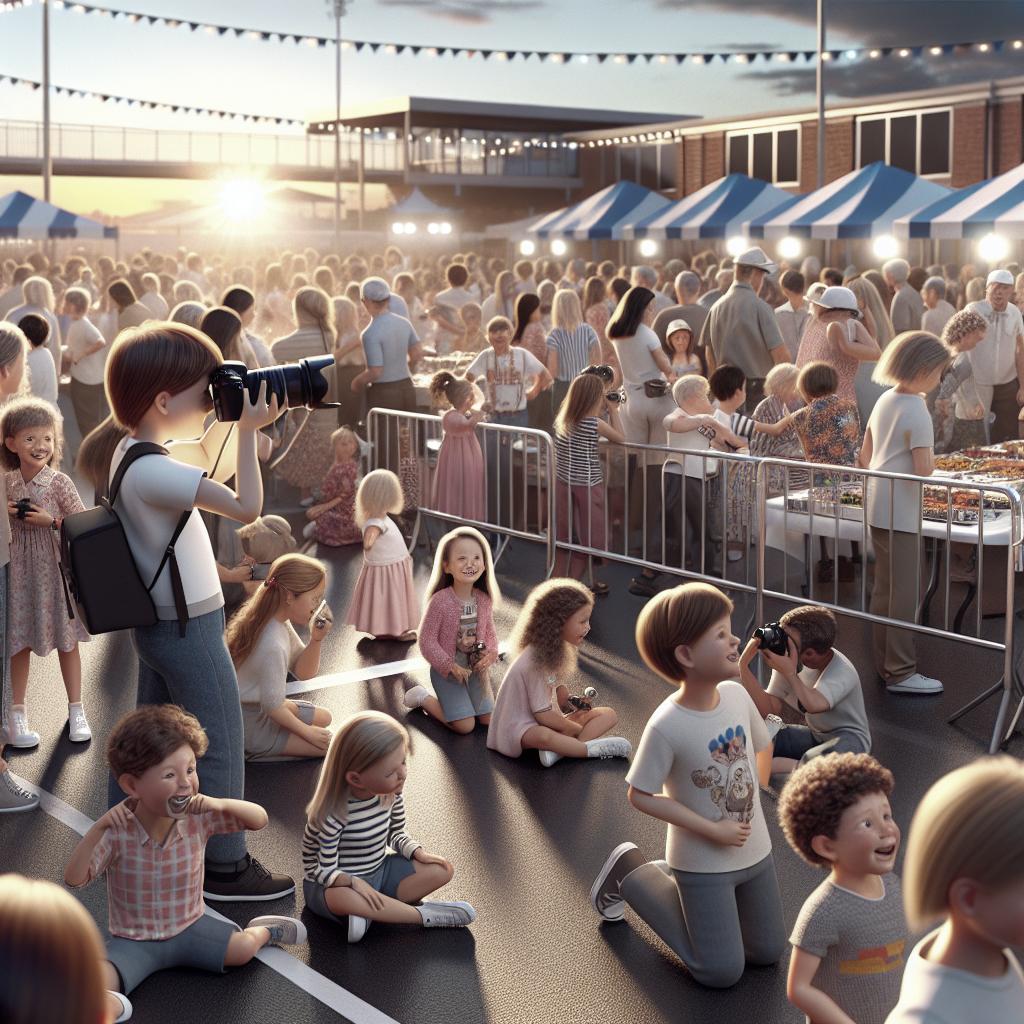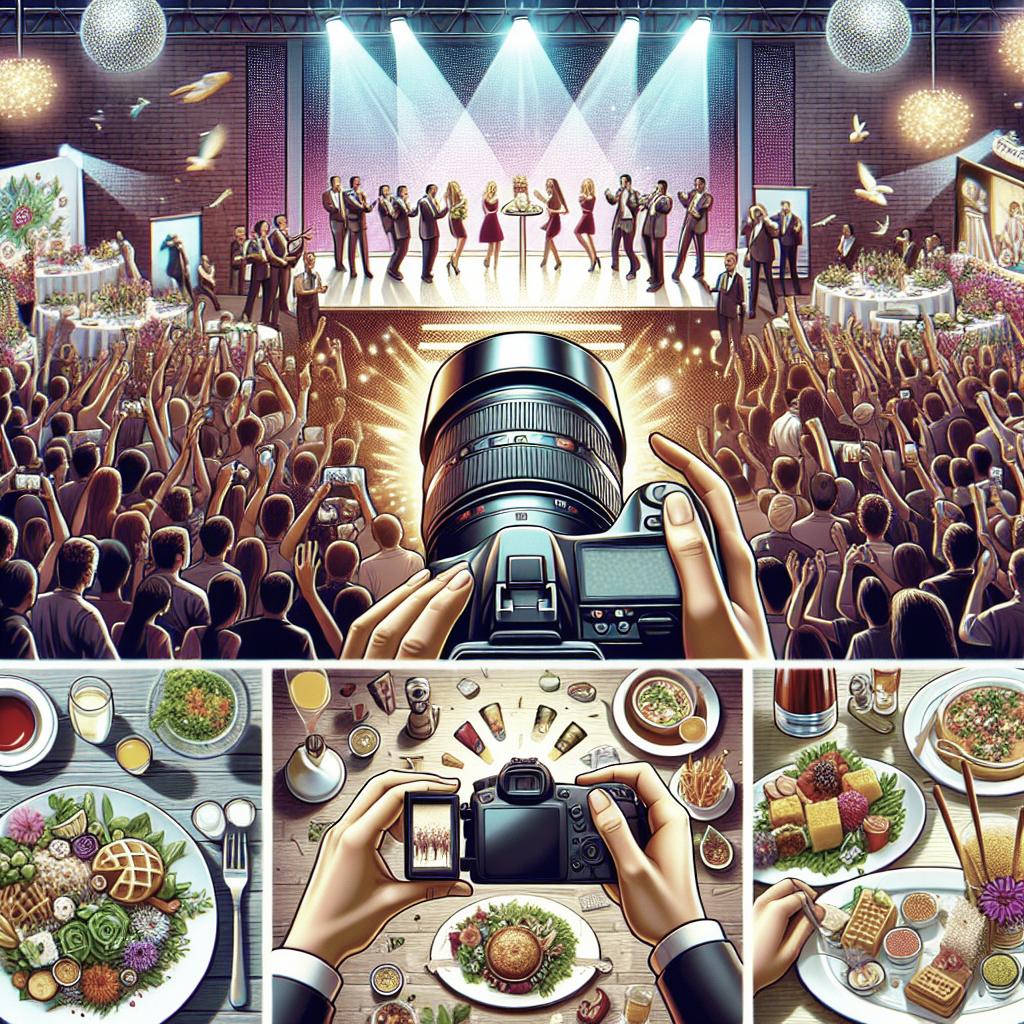<>
Photographing children at events is a joyful yet challenging task. Whether it’s a birthday party, family gathering, or a school event, capturing the candid innocence of kids requires a different technique than standard event photography. In this blog post, we’ll explore practical tips to help you photograph children effectively at events. We’ll discuss the importance of being flexible and minimalistic with gear, emphasizing spontaneous moments over planned shots. We’ll delve into compositional strategies like getting low to a child’s eye level and using wide-angle lenses for a more immersive perspective. Finally, we’ll touch on the significance of capturing a child’s view and integrating engaging elements into your composition. These strategies will ensure your photos are vibrant, authentic, and truly reflective of the energy of the event.
1. Be flexible
Photographing children requires a flexible approach. Children are spontaneous and full of energy, which means they rarely stay in one place for long. To capture these fleeting moments, you need to be ready to move quickly and adapt to their pace. Unlike adults, kids won’t often pose for long periods, so your strategy should focus on blending into their world and following their lead. Flexibility also extends to your shooting style. Sometimes the perfect shot comes in an unexpected moment when a child is gazing in wonder or bursting into laughter. Be prepared to adjust your techniques on the spot, shifting from posed portraits to candid captures. This adaptability will allow you to seize authentic moments that communicate the genuine emotions and interactions at the event.
2. Pare down the gear
Less is more when photographing children at events. Lugging around heavy, cumbersome gear can slow you down and intimidate your young subjects. A small, versatile setup will enable you to be more agile and responsive. Consider using a lightweight camera body with a versatile lens like a 24-70mm, which can handle a range of scenarios from wide group shots to close-ups. Other essential items include a spare battery, memory card, and perhaps an external flash with a diffuser for indoor events. By paring down your equipment, you reduce the chances of missing a great shot due to cumbersome gear changes. Plus, a streamlined setup helps you maintain a fun and approachable demeanor, making children feel more comfortable.
3. Let go of the “main event”
While significant moments such as cutting the birthday cake or opening presents are essential, don’t let them consume all your attention. Often the most memorable photos arise from unexpected, candid moments — a child’s shy smile, a belly laugh, or an intense game of tag. By focusing entirely on the planned highlights, you risk missing these natural, emotion-packed moments that tell a fuller story of the event. Allow yourself the freedom to wander and observe. Keep an eye out for spontaneous interactions and expressions that convey the true essence of childhood. Being open to these moments will result in a more dynamic and comprehensive collection of images that resonates deeply with viewers.
4. Get low, go wide
Perspective is key when photographing children. Getting down to their level will allow you to capture their world from their viewpoint, resulting in more relatable and emotionally engaging photos. Kneel, squat, or even sit on the ground to be at eye level with your young subjects. This approach not only makes children feel more comfortable but also brings a natural-looking perspective to your images. Using a wide-angle lens, such as a 24mm, can also enhance your compositions. Wide lenses provide a sense of space and context, capturing the environment around the children and creating a narrative within each frame. This technique is particularly effective in bustling event settings where the surroundings contribute to the story.
5. Finding compositional elements
Incorporate strong compositional elements to elevate your child photography. Look for leading lines, shapes, and patterns that draw the eye to your subject. Frames within frames, such as doorways or playground equipment, can add an additional layer of interest and focus. Background elements should complement, not distract, from the main subject to maintain a balanced and compelling image. Another useful technique is to utilize foreground elements to create depth. For instance, shooting through foliage or playground structures can add a dynamic, layered look to your photographs. These compositional strategies engage viewers and add a professional touch to your work.
6. Kids’ eye view
Capturing the world from a child’s eye view adds a unique and intimate dimension to your photographs. Observe how children interact with their environment — what fascinates them, what makes them laugh, and what curious objects grab their attention. This perspective often reveals details and moments that adults might overlook. To achieve this, try to immerse yourself in their world. Follow their gaze, mimic their movements, and focus on the elements they find captivating. This approach not only creates engaging photos but also allows you to document the event in a way that resonates with children and adults alike, preserving the innocence and wonder of childhood.
Holly Berfield
Holly Berfield is a seasoned family and event photographer who specializes in capturing candid moments and authentic expressions. With over a decade of experience, Holly’s work has been featured in numerous parenting magazines and photography blogs. She is passionate about teaching and regularly conducts workshops for aspiring photographers, sharing her insights and techniques for capturing the essence of family life.
Recent Posts by Holly Berfield
- 5 Tips for Stress-Free Family Photo Sessions
- How to Edit Photos Like a Pro: A Beginner’s Guide
- The Best Camera Settings for Action Shots
- Why Lighting Can Make or Break Your Photos
Lessons learned
| Tip | Key Points |
|---|---|
| Be flexible | Adjust to children’s pace; capture spontaneous moments |
| Pare down the gear | Use a small, versatile setup; remain agile |
| Let go of the “main event” | Focus on candid moments; wander and observe |
| Get low, go wide | Photograph from children’s eye level; use wide-angle lenses |
| Finding compositional elements | Use leading lines, shapes, and patterns; create depth |
| Kids’ eye view | Capture details from a child’s perspective; preserve childhood wonder |


